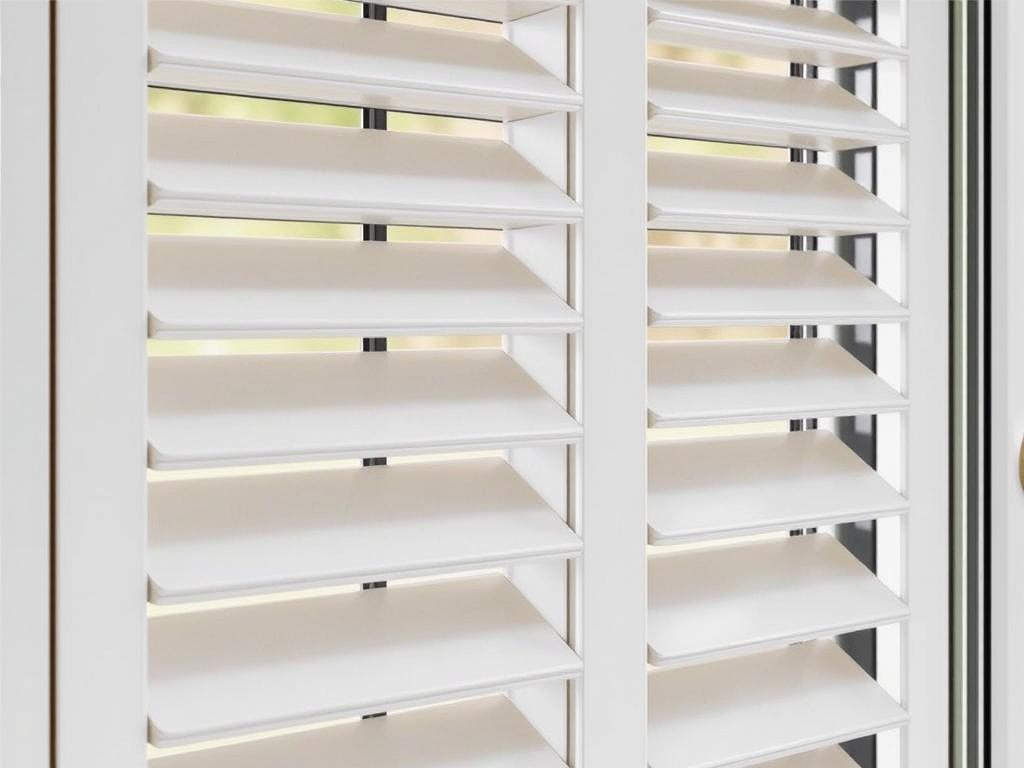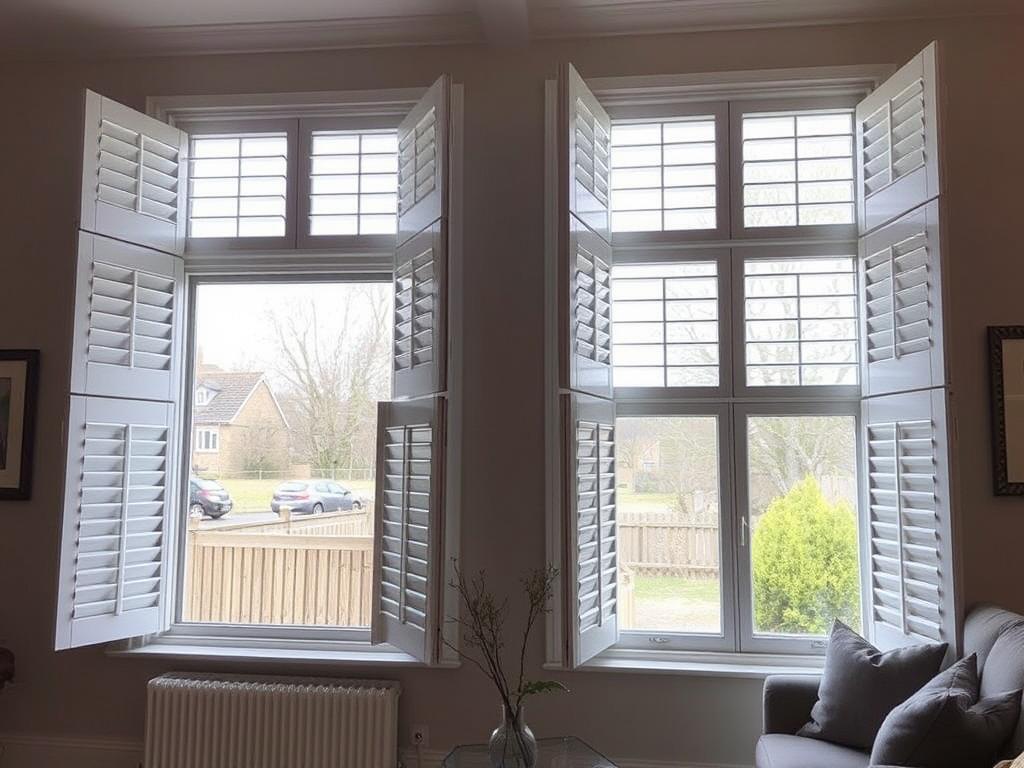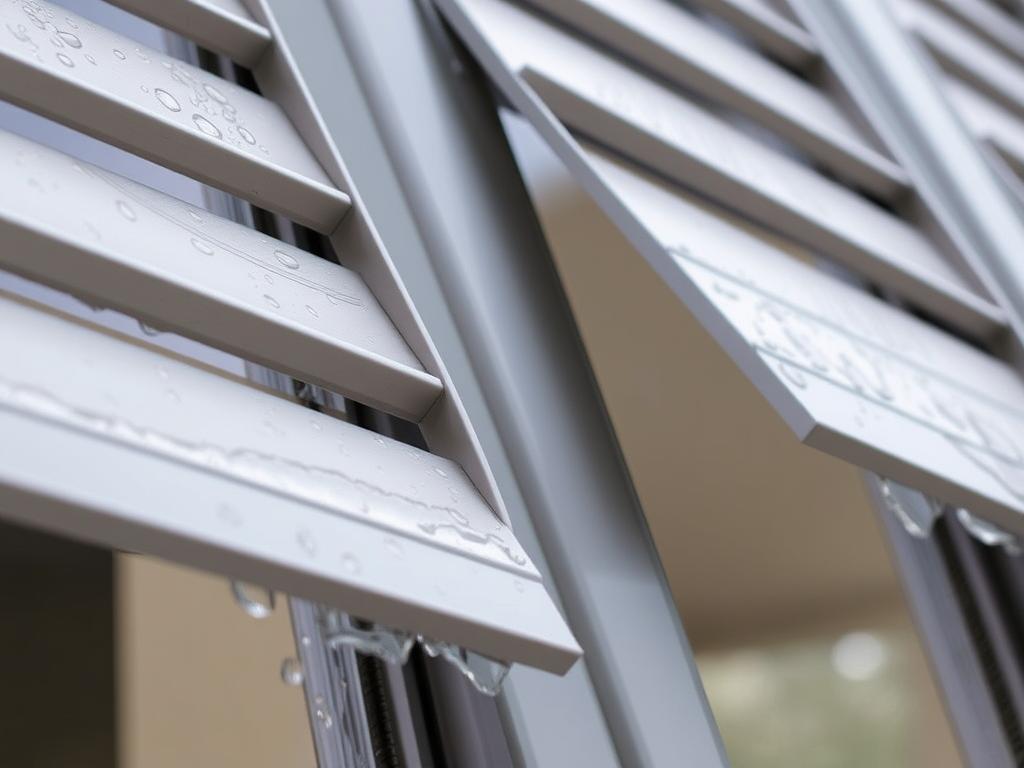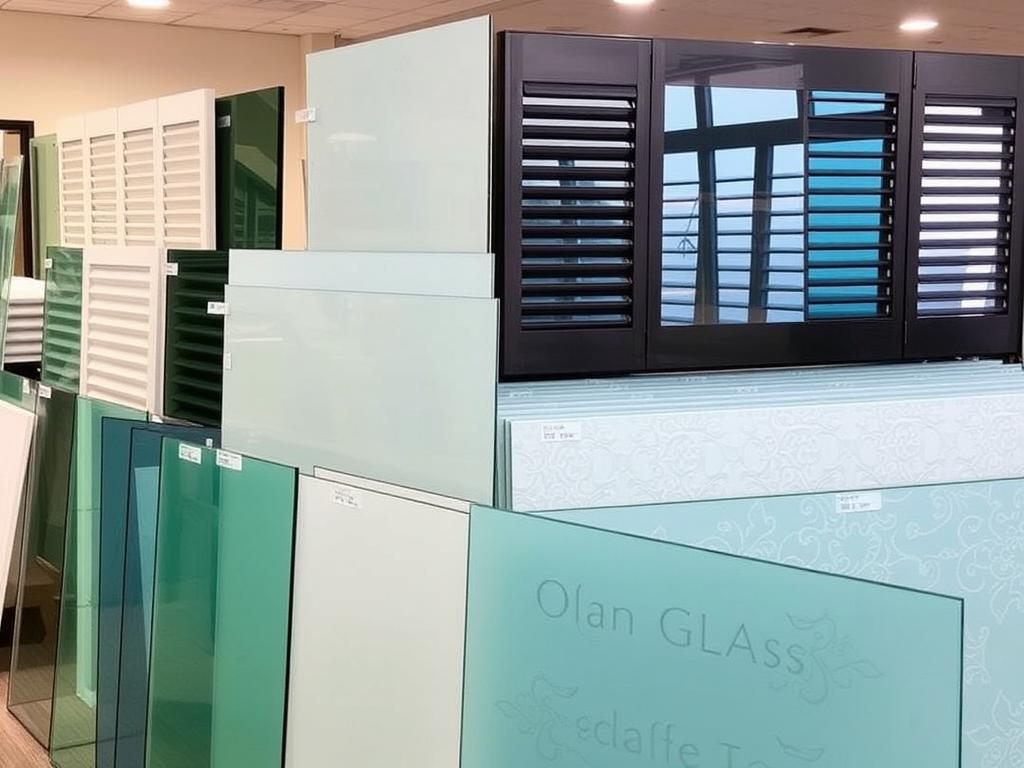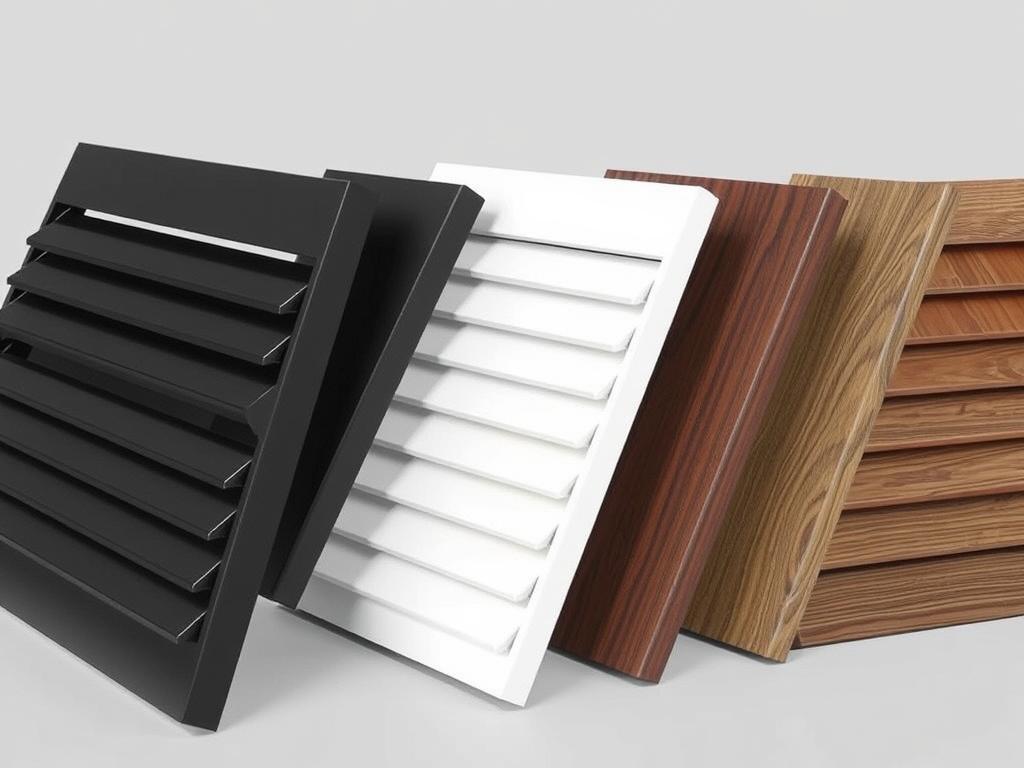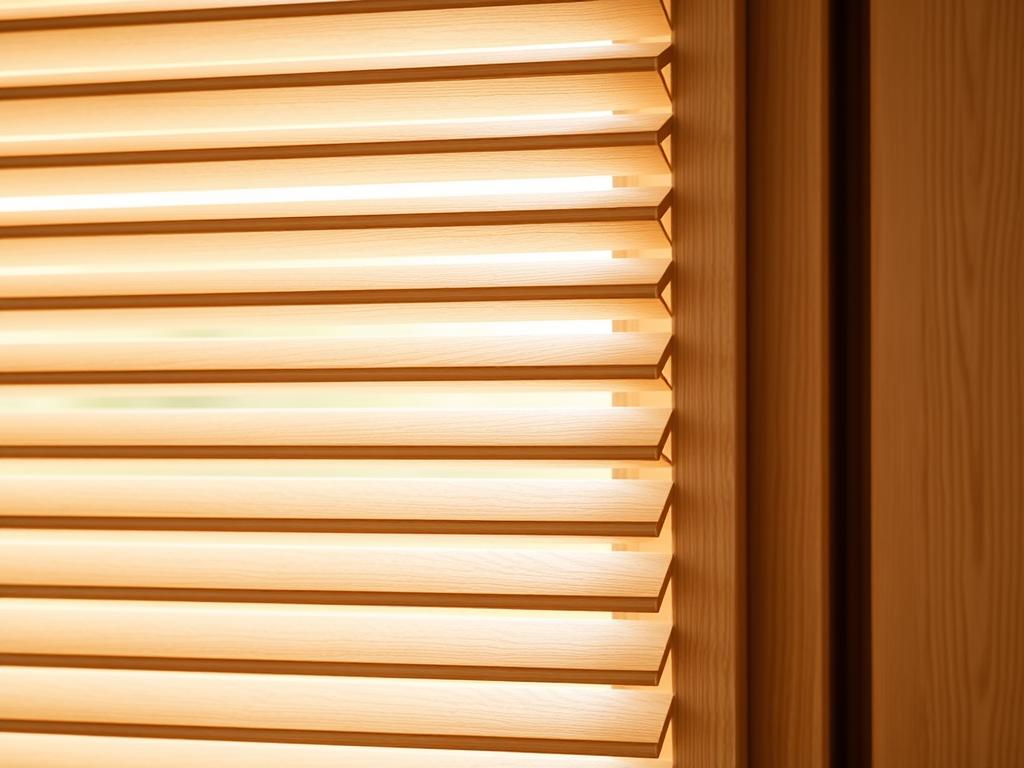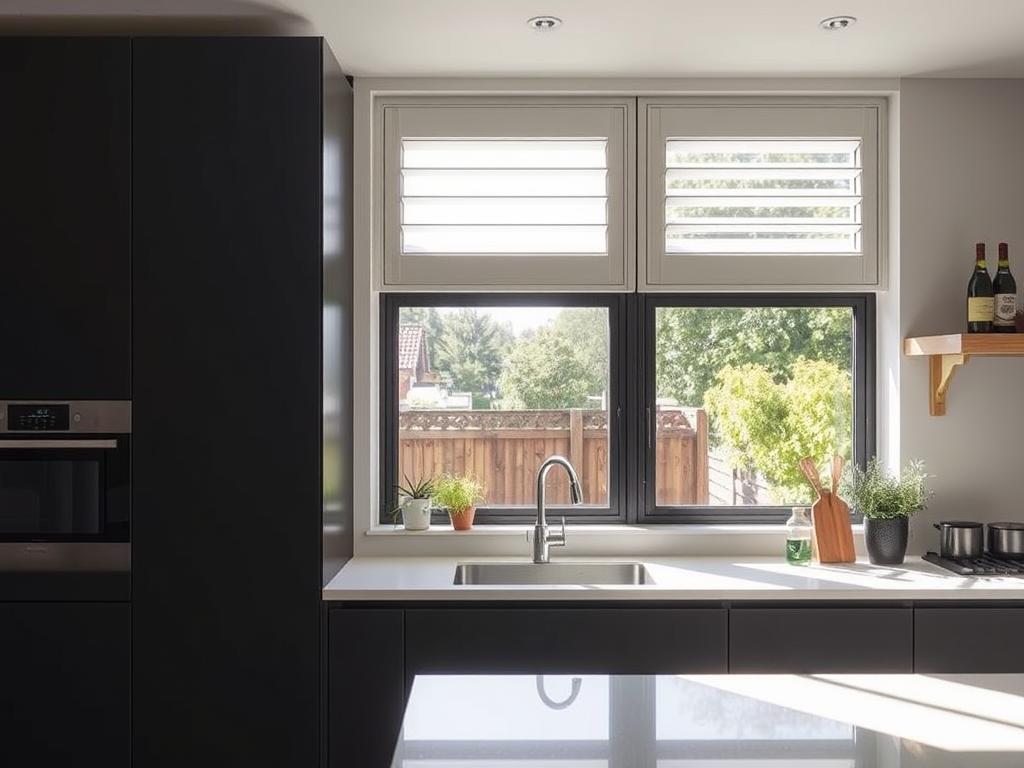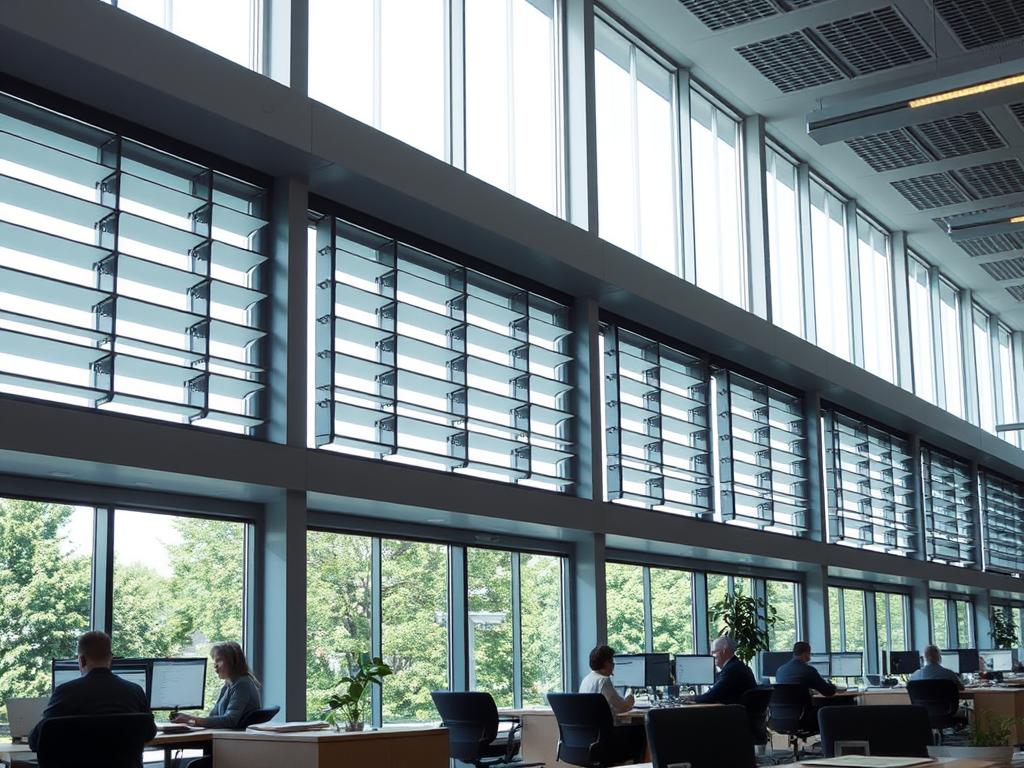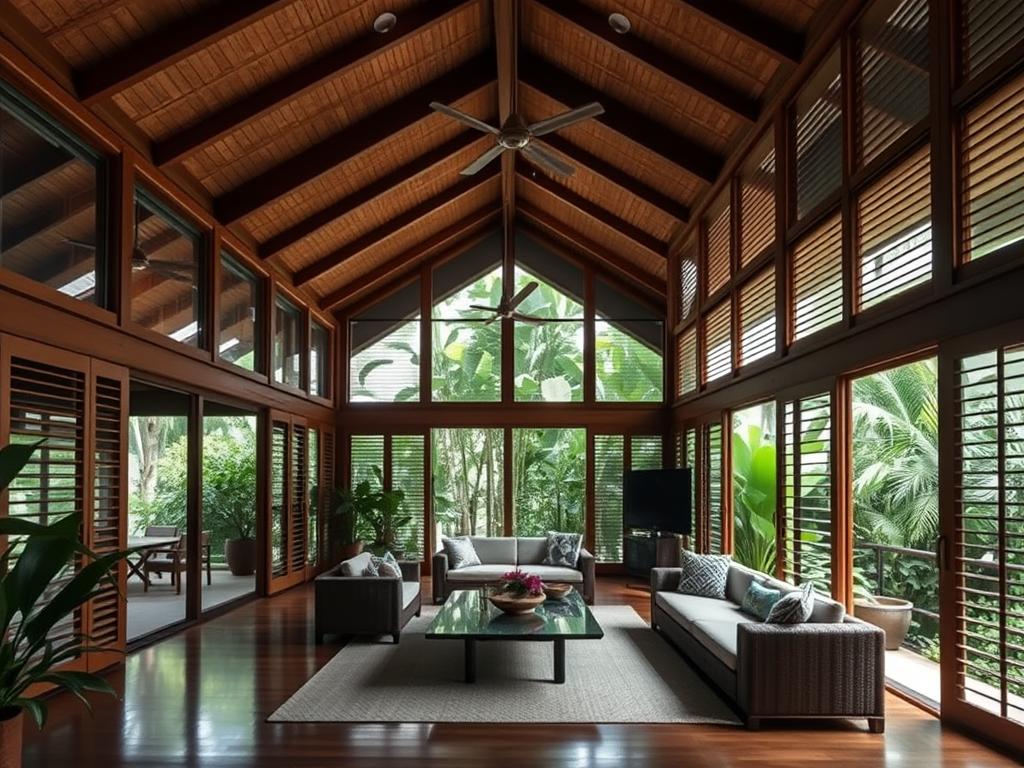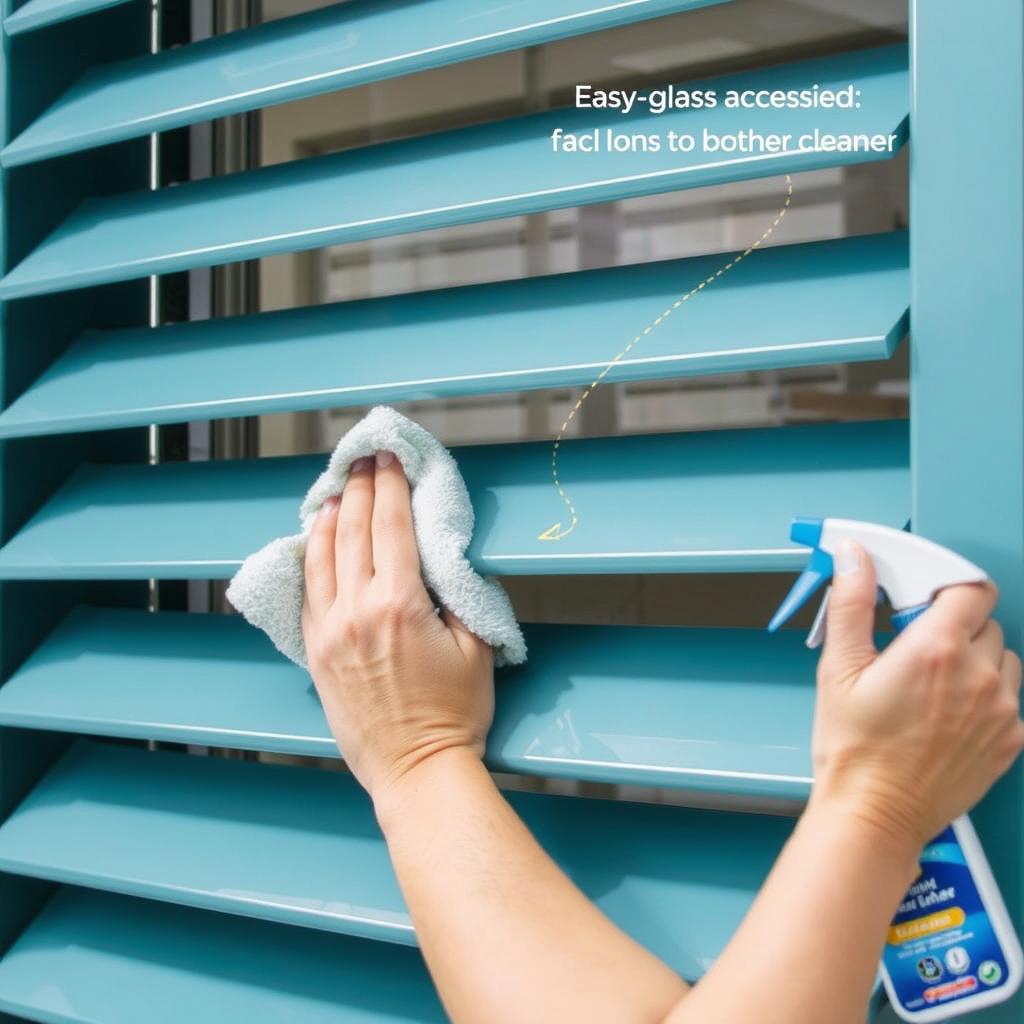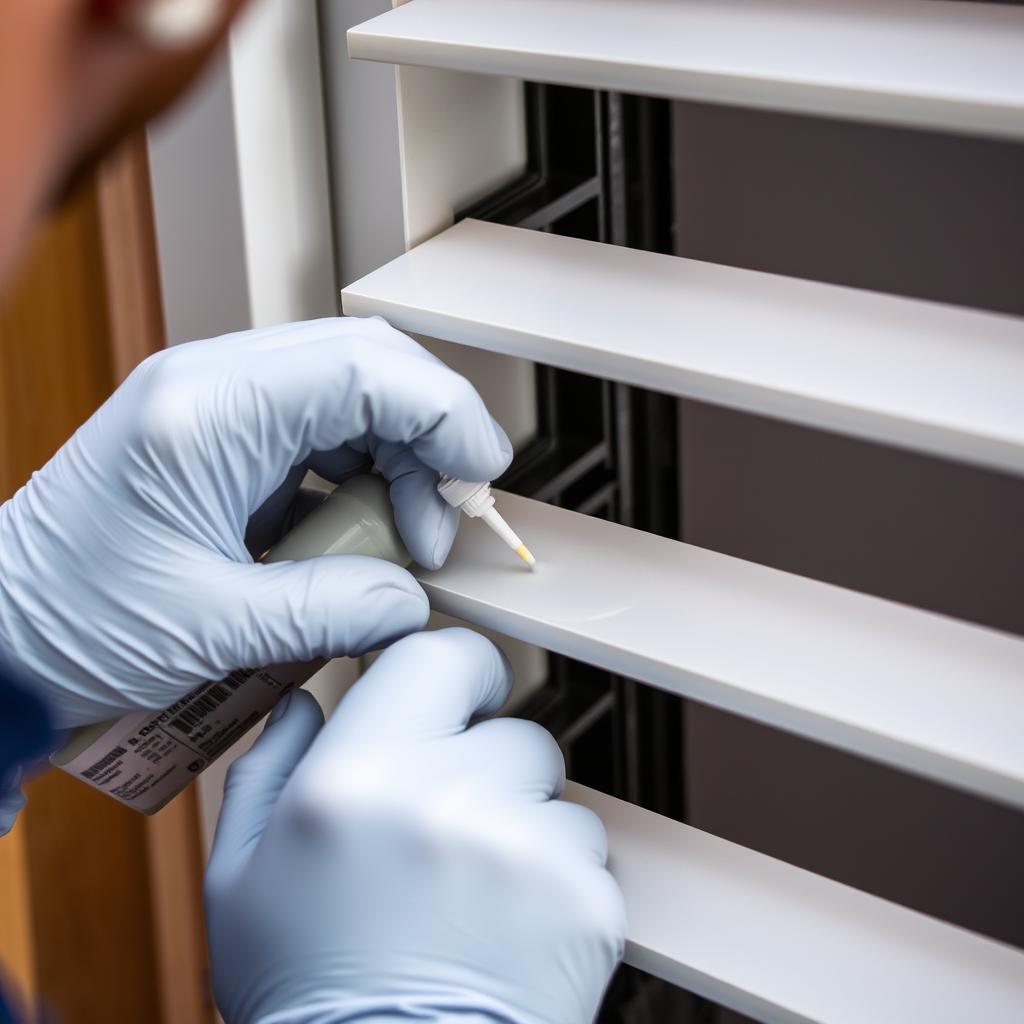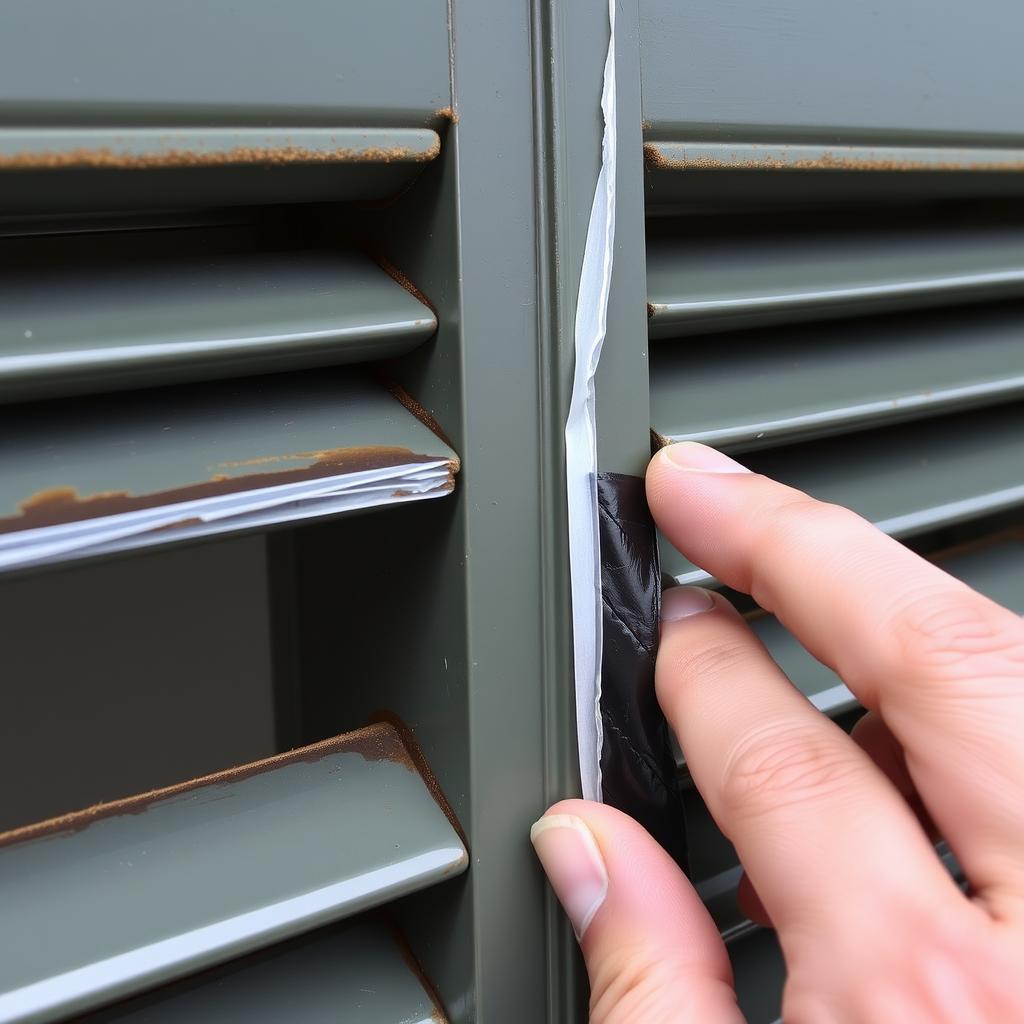What Are Louvre Windows?
Louvre windows consist of horizontal blades or slats that pivot open and closed using a side lever or handle mechanism. Unlike traditional windows that slide or swing, louvre windows rotate their blades to create openings between each slat, allowing for precise control of ventilation and light.
The name “louvre” originates from the French word “louver,” referring to the ventilation structures used in medieval architecture. Modern louvre windows have transformed from simple wooden slats to sophisticated systems made from various materials including glass, aluminum, and timber.
These windows are particularly popular in tropical and subtropical regions like Queensland and New South Wales in Australia, where maximizing airflow while maintaining security and weather protection is essential.
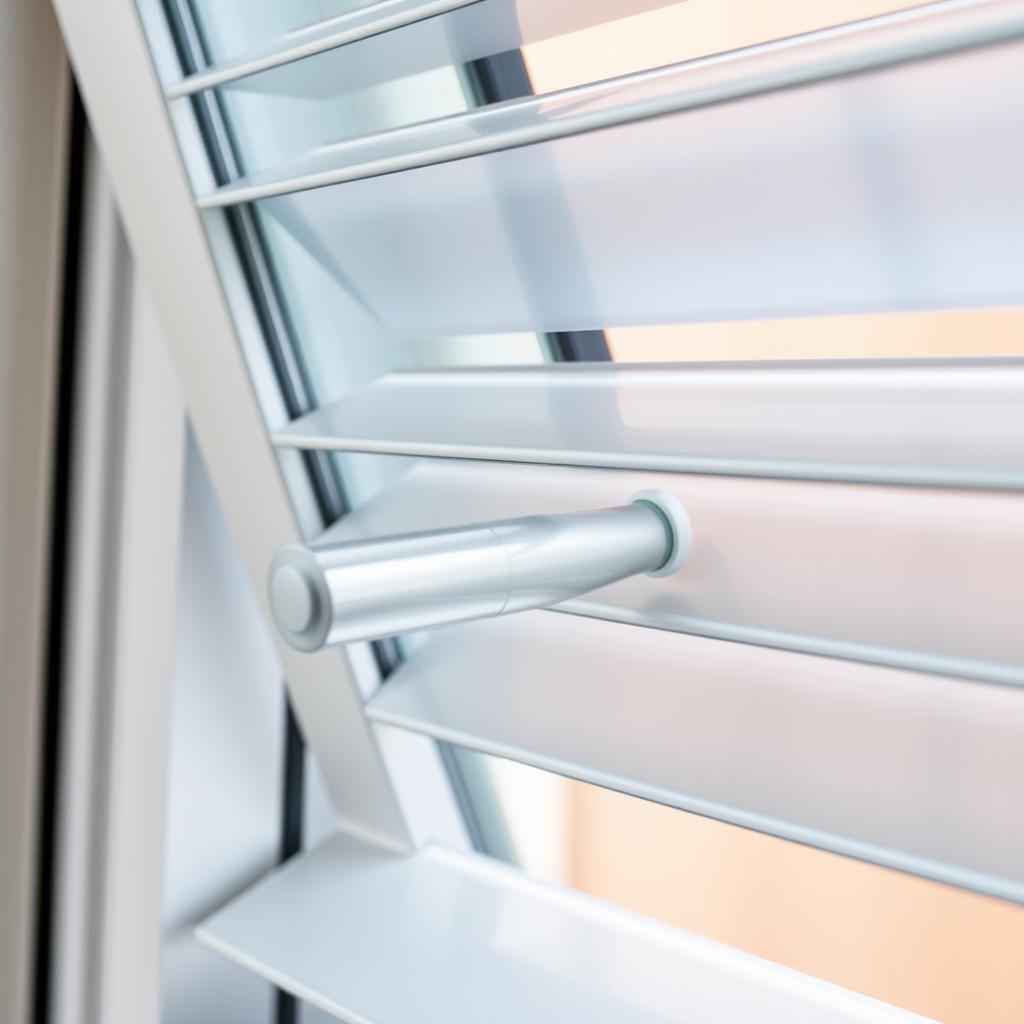
Key Features of Louvre Windows
Adjustable Slats
Louvre windows feature horizontal slats that can be adjusted to any angle between fully closed and fully open, providing precise control over airflow and light entry.
Maximum Ventilation
When fully open, louvre windows allow up to 90% of the window area to be used for ventilation—significantly more than sliding or casement windows.
Weather Resistance
Modern louvre windows include high-quality seals between slats that provide excellent protection against water and wind when closed, with some models rated for cyclonic conditions.
Ready to explore louvre window options?
Get expert advice on the best louvre window solutions for your home’s specific needs and climate conditions.
Louvre Window Materials
Glass Louvre Blades
Glass is the most popular material for louvre blades, available in clear, tinted, frosted, and patterned options. Glass louvres provide visibility while allowing light and air to flow through.
- Clear glass for unobstructed views
- Tinted glass for sun protection
- Satinlite or acid-etched for privacy
- Double-glazed options for insulation
Aluminium Louvre Blades
Aluminium louvres offer durability and security. They’re available in various powder-coated finishes to match your home’s color scheme and can be designed to mimic timber appearances.
- Weather-resistant and low maintenance
- Available in multiple colors
- Stronger security than glass
- Ideal for bathrooms and areas requiring privacy
Timber Louvre Blades
Timber louvres provide a warm, natural aesthetic and are often used in traditional or heritage-style homes. Western Red Cedar is a popular choice for its natural resistance to decay.
- Natural insulation properties
- Distinctive aesthetic appeal
- Can be stained or painted
- Sustainable material option
Benefits of Louvre Windows
Energy Efficiency
Louvre windows excel at natural ventilation, allowing you to cool your home without relying on air conditioning. This can significantly reduce energy consumption during warmer months. When closed, quality louvre windows provide effective sealing to maintain indoor temperatures.
Customizable Privacy
The adjustable nature of louvre windows allows you to fine-tune your privacy levels. You can position the blades to allow airflow while preventing direct visibility into your home, or use frosted or tinted glass options for permanent privacy without sacrificing light.

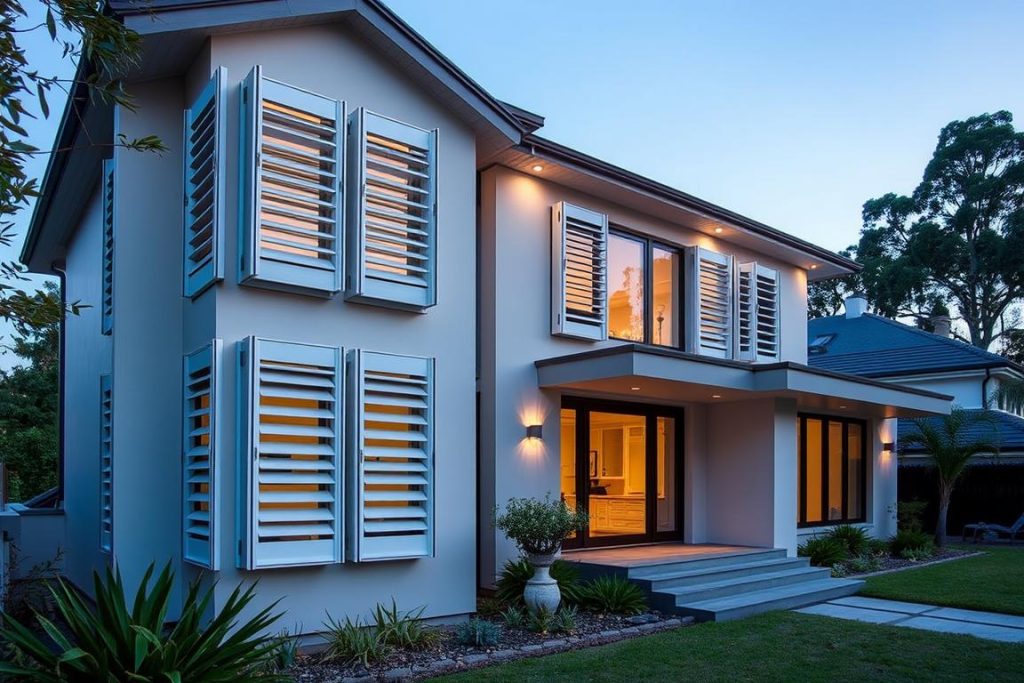
Aesthetic Versatility
Louvre windows add architectural interest to both interior and exterior spaces. Their linear elements create visual rhythm and can serve as a design feature. Available in various frame colors and blade materials, they can complement any architectural style from traditional to ultra-modern.
Optimal Airflow Control
Unlike fixed windows, louvres give you precise control over airflow direction and volume. You can direct breezes upward to avoid papers blowing or create cross-ventilation by strategically placing louvre windows on opposite sides of a room.
Experience the benefits of louvre windows in your home
Speak with a window specialist to discover how louvre windows can improve ventilation, energy efficiency, and style in your living spaces.
Louvre Window Design Variations
Traditional vs. Contemporary Styles
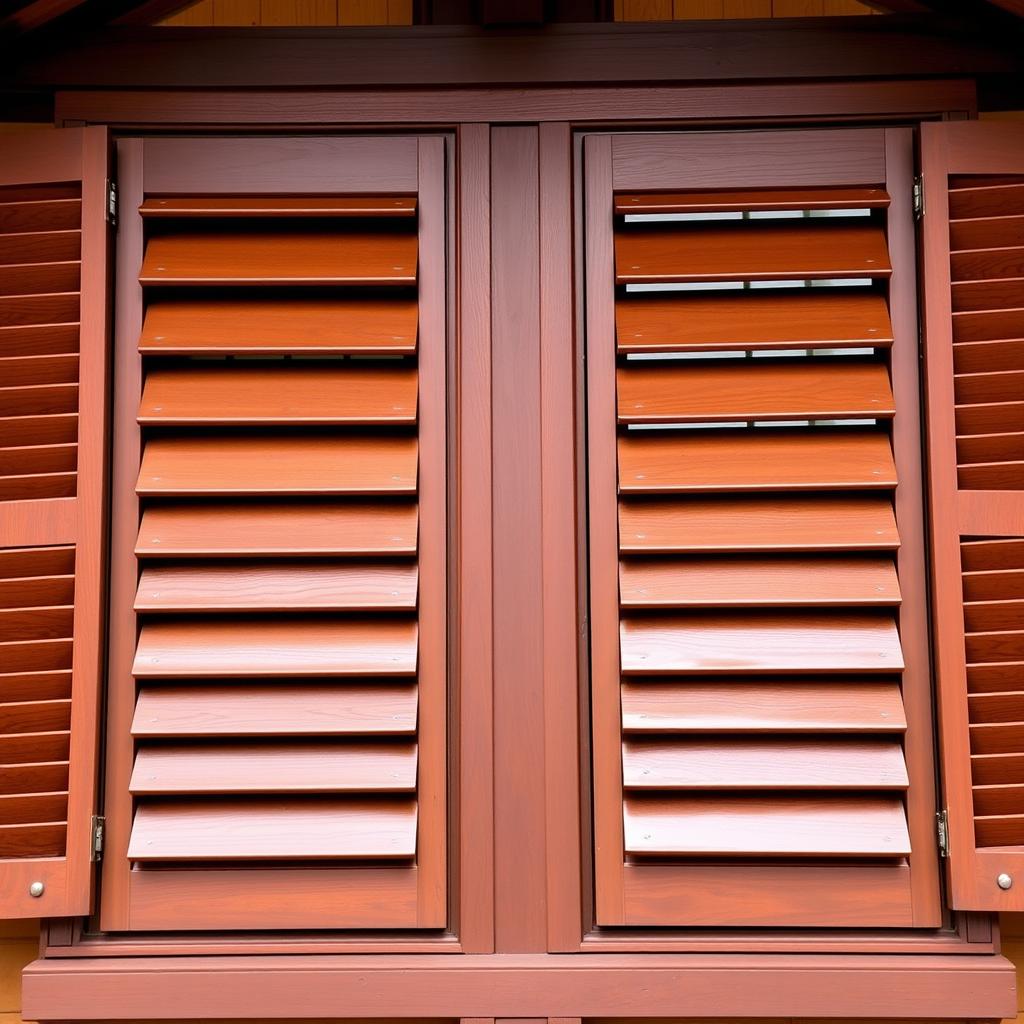 Traditional Louvres typically feature timber frames and blades, often with decorative elements. They complement heritage homes and create a warm, classic aesthetic.
Traditional Louvres typically feature timber frames and blades, often with decorative elements. They complement heritage homes and create a warm, classic aesthetic.
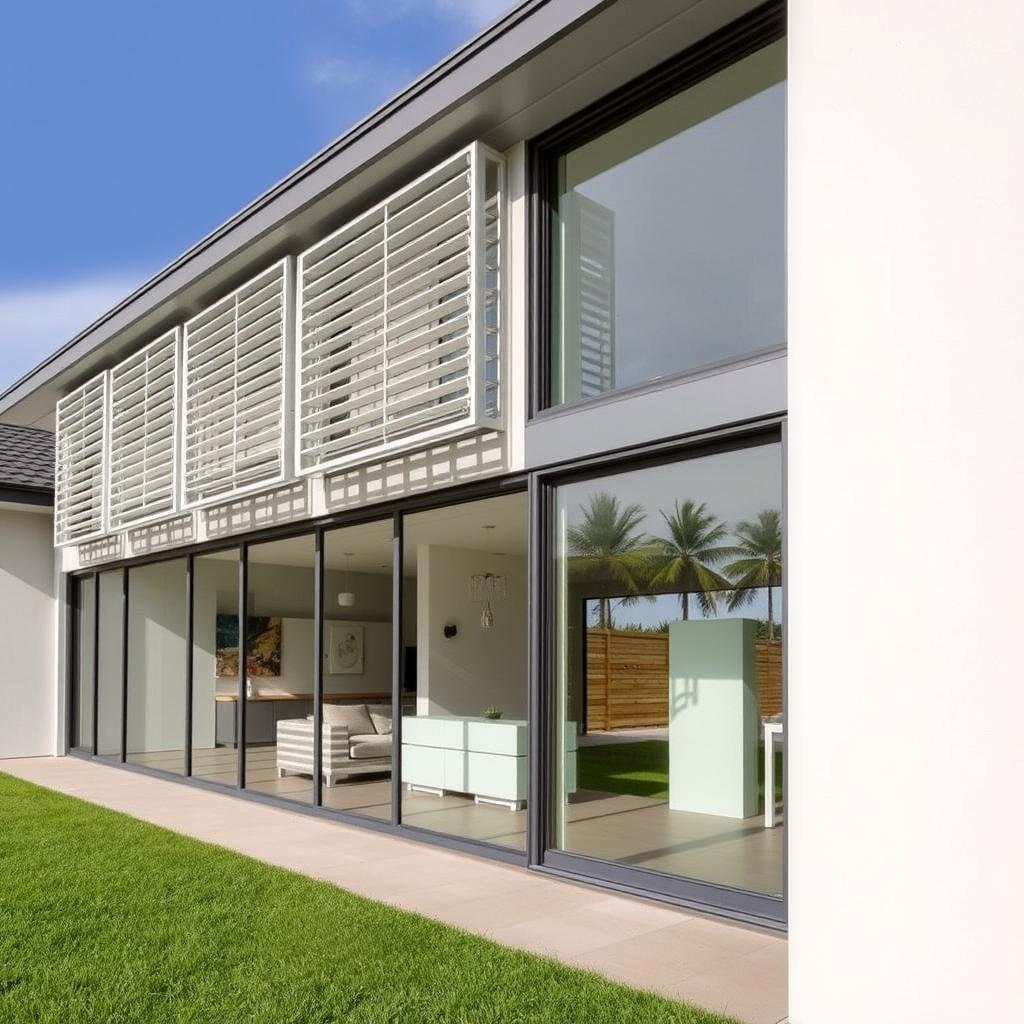 Contemporary Louvres showcase sleek aluminum frames with minimal visual obstruction, often featuring larger glass blades to maximize views and light transmission.
Contemporary Louvres showcase sleek aluminum frames with minimal visual obstruction, often featuring larger glass blades to maximize views and light transmission.
Fixed vs. Operable Configurations
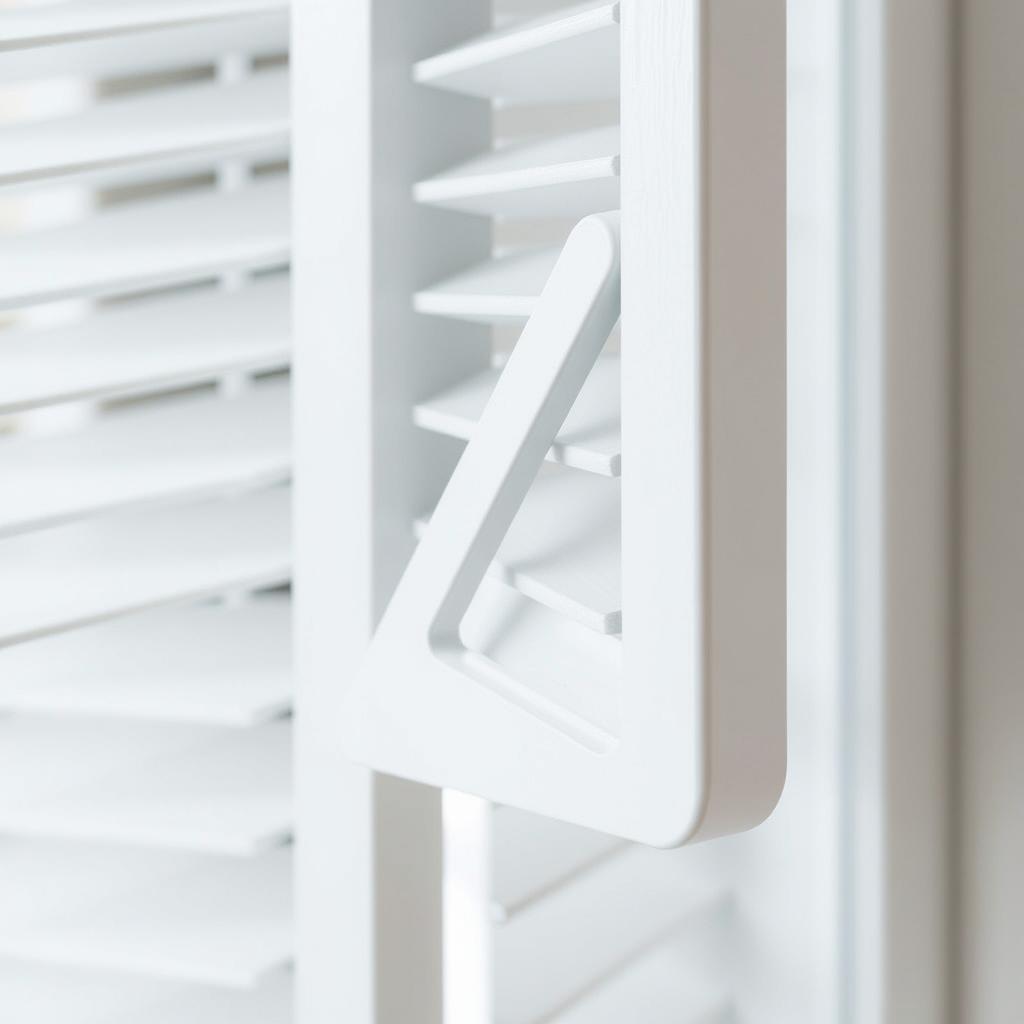 Operable Louvres feature a control mechanism (typically a lever or handle) that allows users to adjust the angle of the blades. These are the most common type, offering full ventilation control.
Operable Louvres feature a control mechanism (typically a lever or handle) that allows users to adjust the angle of the blades. These are the most common type, offering full ventilation control.
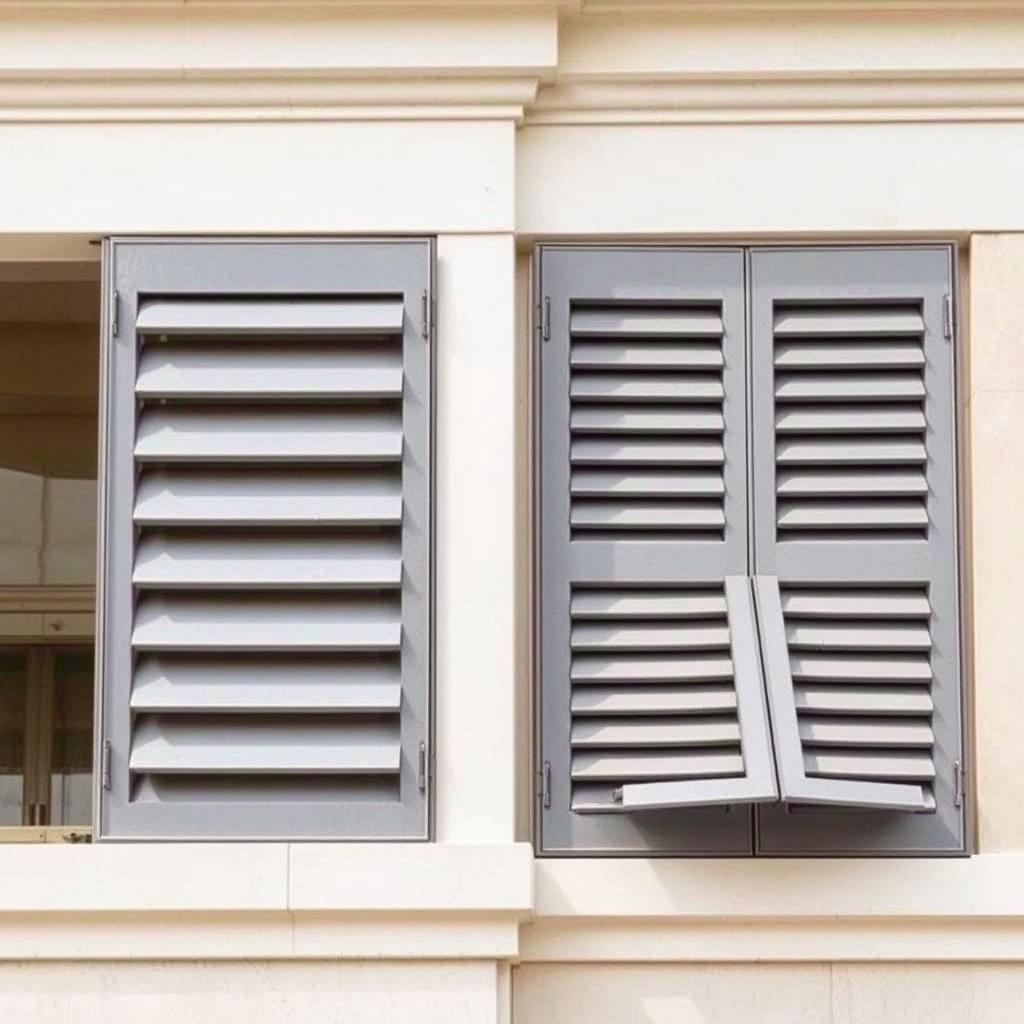 Fixed Louvres are non-operable and serve primarily as architectural elements or for permanent shading. They’re often used on building exteriors or as privacy screens.
Fixed Louvres are non-operable and serve primarily as architectural elements or for permanent shading. They’re often used on building exteriors or as privacy screens.
Popular Applications
Residential Spaces
In homes, louvre windows are ideal for kitchens, bathrooms, and laundry rooms where ventilation is crucial. They’re also popular in bedrooms for their ability to provide airflow while maintaining privacy.
Commercial Buildings
Office buildings and educational facilities use louvre windows to improve indoor air quality and reduce reliance on mechanical ventilation. They’re often incorporated into sustainable building designs.
Tropical Architecture
In tropical climates like North Queensland, louvre windows are essential elements of climate-responsive design, maximizing cross-ventilation while providing protection from rain during tropical downpours.
Installation and Maintenance
Installation Considerations
Installing louvre windows requires precision to ensure proper operation and weather sealing. While DIY installation is possible for experienced homeowners, professional installation is recommended to ensure compliance with Australian Standards and optimal performance.
- Windows must be perfectly level for proper operation
- Sealing is critical for weather resistance
- Consider screening options during installation
- Ensure compliance with local building codes
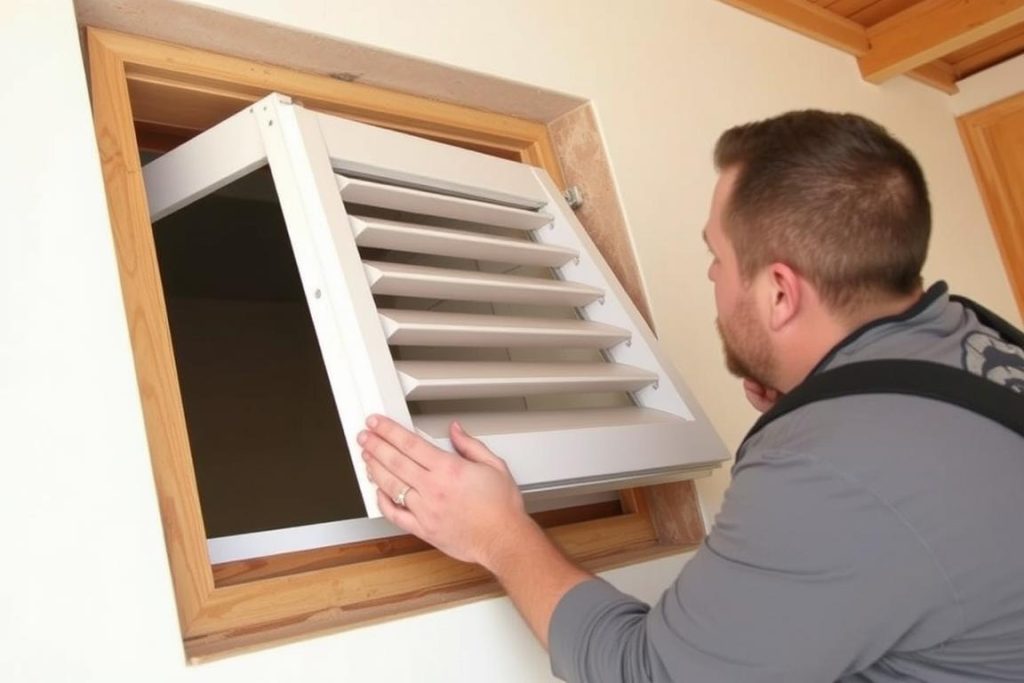
Maintenance Tips
Cleaning
Louvre windows offer the advantage of easy cleaning since both sides of the glass can be accessed from inside. Regular cleaning with mild soap and water is recommended, with special attention to the tracks and mechanisms.
Mechanism Care
The operating mechanisms should be lubricated annually with a silicone-based product to ensure smooth operation. Avoid oil-based lubricants as they can attract dust and dirt.
Weather Seals
Inspect the weather seals between blades periodically and replace them if they show signs of wear or damage. This maintains the window’s water and air tightness.
Need help with louvre window installation or maintenance?
Our window specialists can provide professional installation services or maintenance advice for your existing louvre windows.
Comparing Louvre Windows to Other Window Types
| Feature | Louvre Windows | Sliding Windows | Casement Windows | Awning Windows |
| Ventilation Area | Up to 90% | Up to 50% | Up to 100% | Up to 100% |
| Airflow Control | Excellent | Limited | Good | Good |
| Weather Resistance | Good | Excellent | Excellent | Excellent |
| Security | Moderate | Good | Excellent | Excellent |
| Ease of Cleaning | Excellent | Moderate | Good | Moderate |
| Screening Options | Available | Standard | Limited | Standard |
Louvre Window Advantages
- Maximum ventilation control
- Adjustable for airflow direction
- Easy cleaning from inside
- Architectural design feature
- Excellent for cross-ventilation
Louvre Window Limitations
- Less insulation than fixed windows
- Requires more maintenance
- Security concerns with older models
- Not suitable for all climates
- More moving parts than other windows
Compliance and Australian Standards
Quality louvre windows in Australia are designed and tested to meet or exceed Australian Standards for performance and safety. When selecting louvre windows, look for products that comply with:
- AS2047 – Windows and external glazed doors in buildings
- AS1288 – Glass in buildings – Selection and installation
- AS3959 – Construction of buildings in bushfire-prone areas
- AS4055 – Wind loads for housing
Many manufacturers also offer louvre windows that meet specific requirements for:
- Bushfire Attack Level (BAL) ratings up to BAL-40
- Cyclonic regions with high wind and water resistance
- Energy efficiency with WERS (Window Energy Rating Scheme) certification
- Fall prevention compliance for upper-story installations
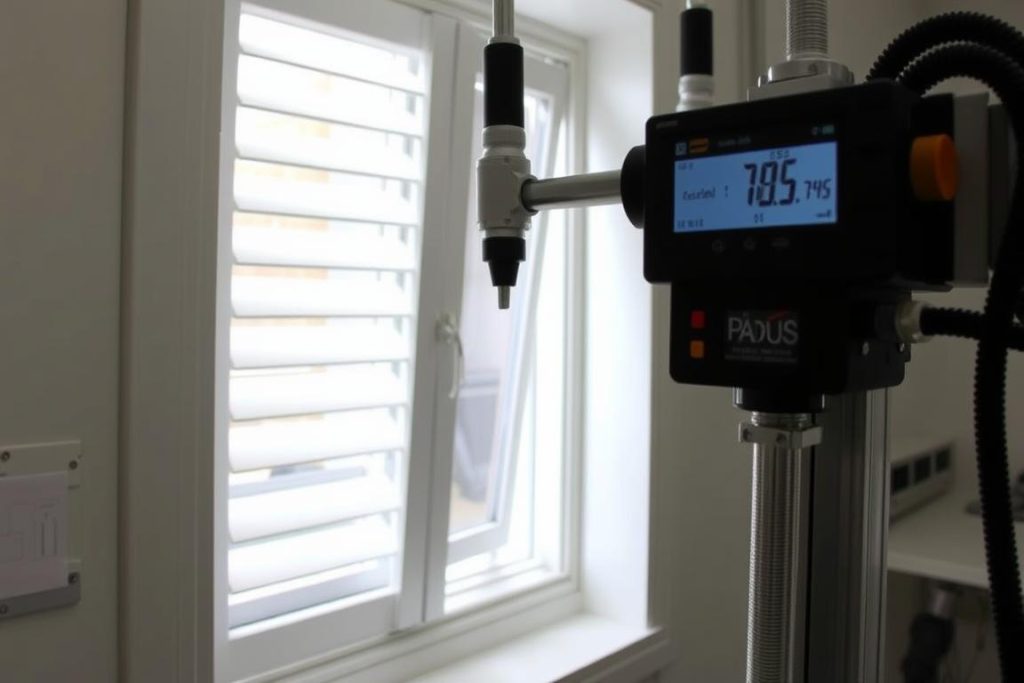
Important: Always ensure your louvre windows are installed by qualified professionals who understand the requirements of Australian Standards. This is particularly important in bushfire-prone areas, cyclonic regions, or for upper-story installations where fall prevention is required.
Frequently Asked Questions About Louvre Windows
Are louvre windows energy efficient?
Modern louvre windows can be very energy efficient when used correctly. They excel at natural ventilation, reducing the need for air conditioning in warm weather. In cooler months, quality louvre windows with good seals prevent drafts when closed. For maximum energy efficiency, consider double-glazed louvre options or combining louvre windows with other window types in different rooms based on orientation and ventilation needs.
Can louvre windows be screened against insects?
Yes, most modern louvre window systems can be fitted with insect screens. There are several screening solutions available, including:
- External fixed screens that cover the entire window
- Retractable screens that can be pulled across when needed
- Security screens that provide both insect protection and additional security
When selecting louvre windows, check with the manufacturer about compatible screening options.
Are louvre windows secure?
Modern louvre windows offer significantly improved security compared to older models. Many now feature:
- Key-lockable handles that secure all blades in the closed position
- Options to be keyed alike with other windows and doors
- Security screens or grilles that can be added for additional protection
- Restricted opening options for child safety
For maximum security, look for louvre windows with multiple locking points and reinforced frames.
How do louvre windows perform in heavy rain?
Quality modern louvre windows are designed with overlapping blades and effective seals to provide good weather resistance when closed. Many are tested to withstand water penetration up to 150-200 Pa of pressure, with premium models achieving ratings up to 600 Pa.
During light rain, louvre windows can remain partially open (with the blades angled downward) to maintain ventilation while minimizing water entry. However, during heavy downpours or storms, louvre windows should be fully closed for maximum weather protection.
Conclusion: Are Louvre Windows Right for Your Home?
Louvre windows offer a unique combination of ventilation control, aesthetic appeal, and functionality that makes them an excellent choice for many Australian homes. Their ability to maximize airflow while providing adjustable privacy and light control sets them apart from other window types.
They’re particularly well-suited for:
- Homes in warm or tropical climates where natural ventilation is essential
- Spaces that benefit from controlled airflow like kitchens, bathrooms, and laundries
- Architectural designs that emphasize indoor-outdoor connection
- Renovation projects seeking to improve natural ventilation
When selecting louvre windows, consider factors like frame material, blade type, security features, and compliance with Australian Standards to ensure you choose the right product for your specific needs and climate conditions.
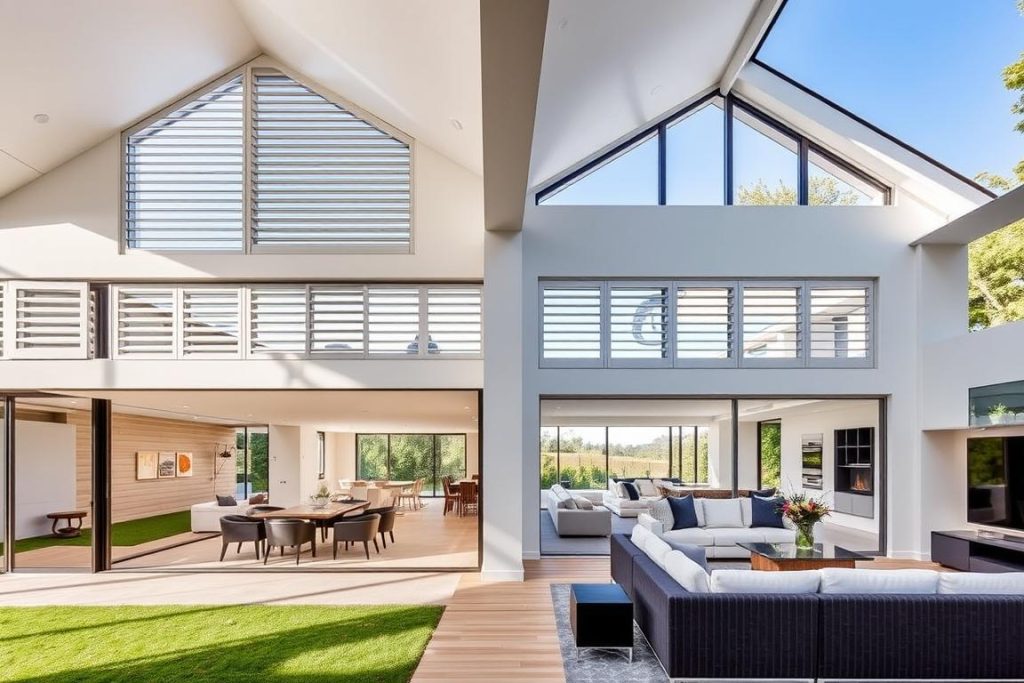
Transform your home with louvre windows
Ready to improve ventilation, energy efficiency, and style in your home? Our window specialists can help you select the perfect louvre window solution.
Please check out our blog on Saving Energy Bills With Aluminium Windows
